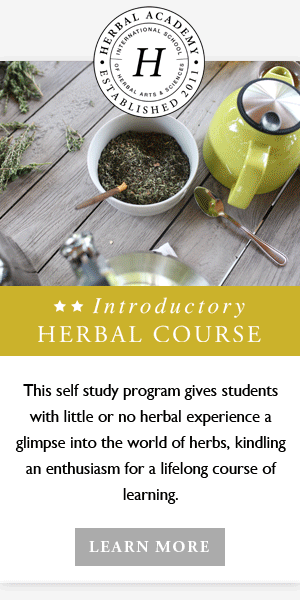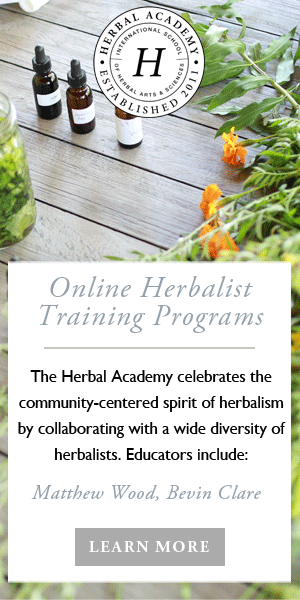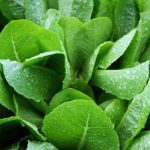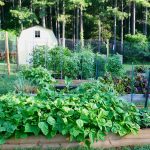Even though it’s cold and snowy out, winter homesteading projects beckon. As I write this, snow is falling in sheets outside my office windows, covering the orchard trees with a blanket of white. Last week, an ice storm knocked power out for 36 hours – and knocked pines down every which way. We had poles down, trees down, and there are several pines down over the apple trees and the perennial garden. Thank God they did not hit the mature apple trees!
We’re feeling a bit of cabin fever, to be sure. Yet, there are plenty of winter homesteading projects to tackle, and I thought I would share a few from around the farm we’ve been working on this winter.
This post contains affiliate links for Amazon and The Herbal Academy. We earn a small commission if you purchase a product after clicking the link. This does not affect your price in any way. Thank you for supporting Home Garden Joy.
Clearing Land to Build a Greenhouse
February began with such mild temperatures that we worked outside on our new winter homesteading project: clearing land and building a greenhouse.
With the help of a neighbor with experience taking down large trees, we cut down 16 pines to make room for our new greenhouse. My husband and I have been able to compost all of the branches and about half of the trunks so far, returning them to the soil in the woods where they would naturally land if the tree had died on its own. It’s been a time-consuming but thrilling project.
One of the benefits of doing this work ourselves and doing it by hand is that dragging the materials to the woods reveals things often hidden from view. As I dragged pine boughs through the trees, I stumbled across a freshly killed woodpecker. It was near dawn, so whatever killed it had done its work overnight.
The only thing left was the beak and feathers (I identified the bird by the telltale feathers near the beak and the plumage left behind.) My best guess is that a fox probably got it, but I’ll never know.
It was an excellent opportunity to study the beak and feathers up close. I would have missed it if I had not been outside working early in the morning or working in the woods.
We plan to design the greenhouse ourselves. My husband volunteered to the carpentry. We still need to clear a few more trees so that there is a good perimeter around the eventual new structure. I don’t want branches falling on it! But this winter homesteading project will take time and effort, and we are willing to do it at our own pace – as the weather permits.
Improving Our Orcharding Skills
Another homesteading project, which is my pet project, is improving my orcharding skills. We’ve tried growing many fruits: apples, peaches, pears, plums, cherries, apricots, figs. And, in the raised bed garden, I have grown blueberries, strawberries, and ground cherries. I know what grows best through trial and error, but I don’t know why.
I’ve been reading Michael Phillips’ book, The Apple Grower, and it is teaching me so much about organic apples. It looks like I had beginner’s luck with my apples, as with the lavender plants I grew from seed. I didn’t know it then, but I planted my apple trees in a perfect spot. My goal this year is to learn to care for them better and to share the harvest at the community kitchen in Pamplin. We often have so many apples now that I give them away.
Our figs were abundant last year, and I continue to enjoy the fig preserves I made in August. Getting up at 5 a.m. and canning batches of fig preserved last year wasn’t part of my plan, but now in the middle of February, I appreciate the figs more than ever. I am making notes about how to improve the jam. Note to self: remove the stems even if the recipe says leave them! Honestly, why did the recipe say to leave them on? It’s like finding twigs as a toy surprise in every spoonful. It had to be a mistake in the cookbook!
Exploring New Vegetable Varieties
Purple carrots, white radishes, golden beets, red lettuce – my readers know how much I love growing unusually colored vegetables. This year is no different. I’m pouring over the Baker Creek Heirloom Seed catalog an the Southern Exposure Seed Catalog, too. I will probably place my orders for seeds this weekend. I like “Merlot” from Baker Creek but “Rouge d’Hiver” is also a good red-leaf variety. “Red Sails” grew well last year, but Merlot remains my favorite red lettuce.
I’m increasing our herb plants this year as well. My stock of dried savory is running out, and that’s an excellent herb to liven up everything from roasted potatoes to stews. Savory is one of those herbs that smells and tastes terrible fresh from the plant. When it is dried, however, and added to a recipe, it tastes incredible and adds depth to the dish. I’ve added it to the turkey bone broth I made from the Thanksgiving turkey last November and it livened it up.
Continuing My Herbalism Knowledge
This year has found me struggling with what I call “old lady complaints” – nagging infections that won’t go away and more trips to the doctor for little things than I’ve made in many a year. I’ve picked up my herbalism and natural health books once more and am studying herbs, energetics, and simple, natural ways to support my immune system.
Planning Spring Projects
Lastly, we are planning spring projects as part of our winter homesteading efforts. This includes buying lumber for the inevitable replacement of raised beds. We have several about to split apart. Some of these raised beds have been patched with metal corner brackets, but the wood is now so rotted that it is pulling away from the patches. We need to clean up the pines that have fallen into the orchard from the ice storm, continue trimming vines growing every which way in the woods, and clear the paths so we can enjoy the gardens once more this spring.
Growing Fruits, Vegetables and Herbs Requires Continual Care
For a small hobby farm that doesn’t have livestock, we sure do have work! Even trees like the apple trees require care. On a wintry day like today, I am grateful we do not have livestock to feed and water, but some days, like when I go to the grocery store and see the prices of eggs or the quality (or lack thereof) of the beef, I wish we had cleared more pastureland and added animals. For now, however, I am content with our plant-based dreams, and to continuing to grow healthy, organic fruits, vegetables, and herbs to feed ourselves and share with the community.







